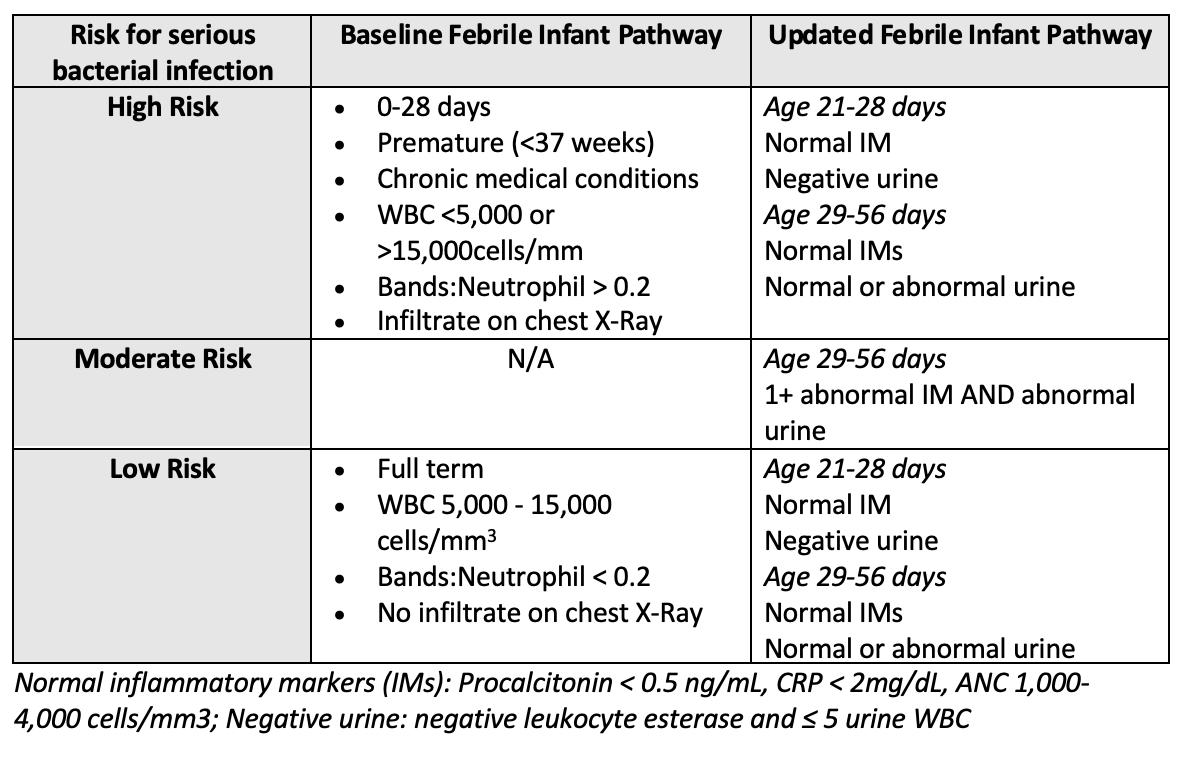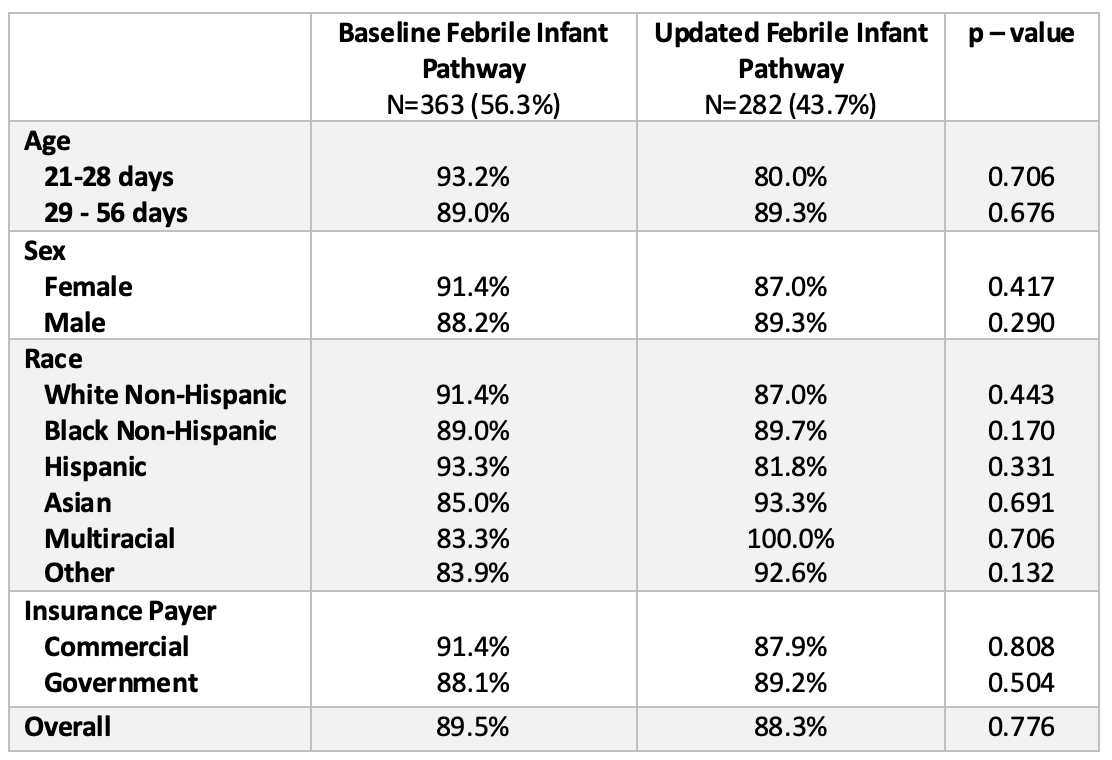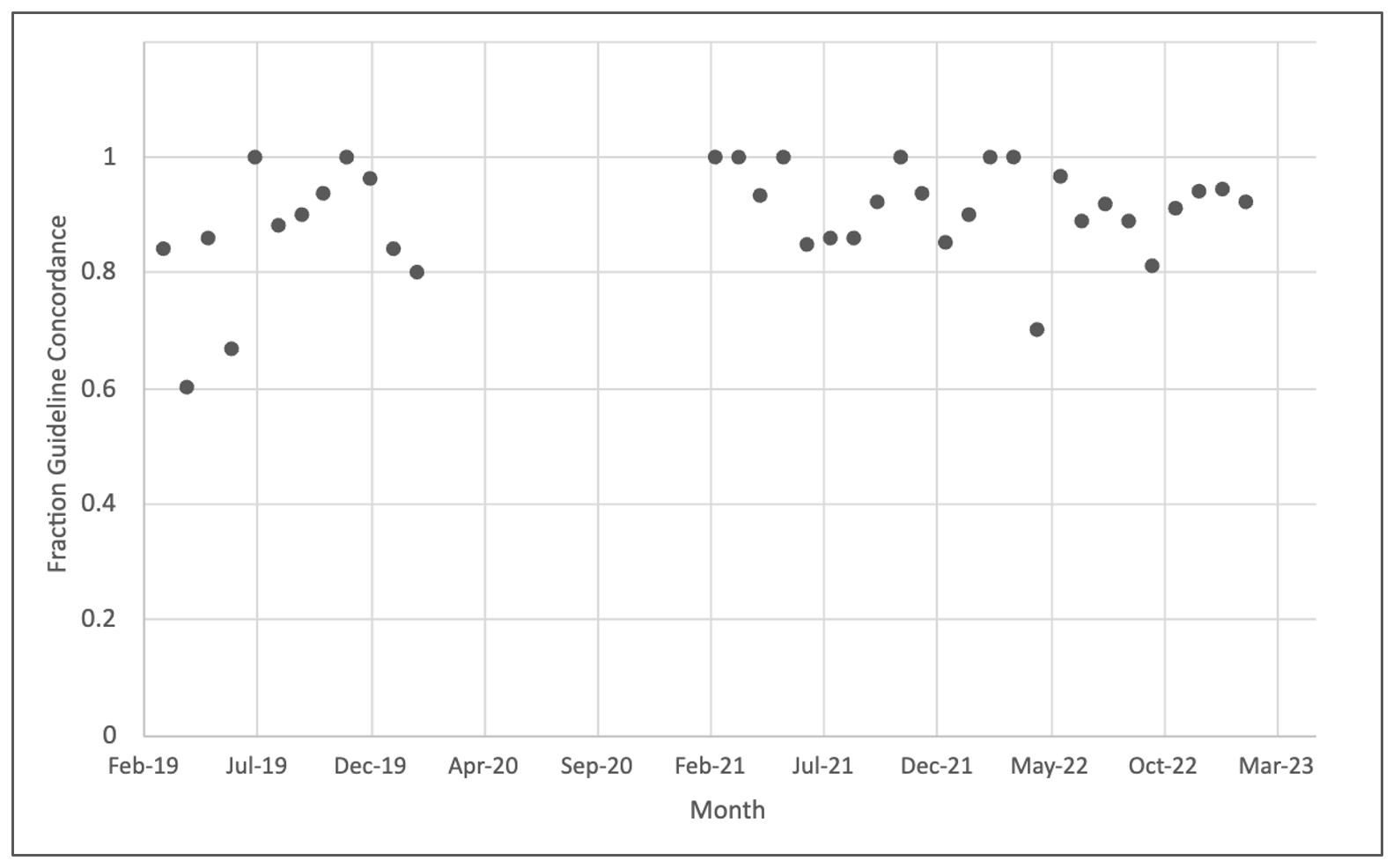Emergency Medicine
Session: Emergency Medicine 3: Serious Bacterial Infections
97 - Impact of a Clinical Guideline on Healthcare Disparities for Emergency Department Management of Febrile Infants
Saturday, May 4, 2024
3:30 PM - 6:00 PM ET
Poster Number: 97
Publication Number: 97.1365
Publication Number: 97.1365

Sophia E. Nigrovic (she/her/hers)
Student Researcher
Bowdoin College, Childrens Hospital of Philadelphia
Brunswick, Maine, United States
Presenting Author(s)
Background: Protocolization of medical practice has been seen as a potential tool to minimize bias and errors in clinical care. Alternatively, scholarship by Probst et al. (2017) and others has established the importance of shared decision making for quality patient care. In March 2022, our institution updated our clinical pathway for the management of febrile infants to align with the 2021 American Academy of Pediatrics guideline. The impact of these recommendations on disparities in care is unknown.
Objective: To compare rates of guideline-concordant lumbar puncture (LP) attempts in young febrile infants performed in the pediatric emergency department (ED) before and after the institution of a modified clinical pathway and to determine if concordance varied by patient race/ethnicity.
Design/Methods: We performed a retrospective cohort analysis of infant 21 to 56 days of age with fever > 38C who presented to a single ED between March 2019 and February 2020 and March 2021 and February 2023. Race and ethnicity as reported by patient family were abstracted from the electronic health record. We defined guideline concordance as a lumbar puncture (LP) attempt when the patient was deemed high risk for serious bacterial infection (baseline group before March 2022) or high/moderate risk (updated group after April 2022) (Table 1). Using a Chi Square test, we compared guideline concordance over time and between racial/ethnic groups.
Results: Of the 645 eligible ED encounters, 363 (56.3%) were evaluated with the baseline clinical guideline and 282 (43.7%) under the updated pathway. Overall, 267 (41.4%) were Non-Hispanic White, 205 (31.8%) were Non-Hispanic Black, 63 (9.8%) were Hispanic, 35 (5.4%) were Asian, 17 (2.6%) were multi-racial, and 58 (9.0%) were of some other race or ethnicity. Incidence of LP attempts remained consistent across time periods (21.8% baseline vs 21.6% updated, p = 0.976). The updated guideline was not associated with a change in LP concordance (baseline 89.5% vs. updated 88.3%; p = 0.776) (Figure). Additionally, guideline concordance did not vary significantly for Non-Hispanic White (91.4% baseline vs. 87.0% updated; p = 0.443) or Non-Hispanic Black (89.0% baseline vs. 89.7% updated; p = 0.170) infants (Table 2).
Conclusion(s): Concordance with guideline recommendations for LP performance did not change over the study period. Performance of LP did not vary significantly by racial and ethnic groups both pre and post pathway changes, suggesting that pathway-guided care may help minimize disparities in care, even when incorporating more complex processes, such as shared-decision making.



